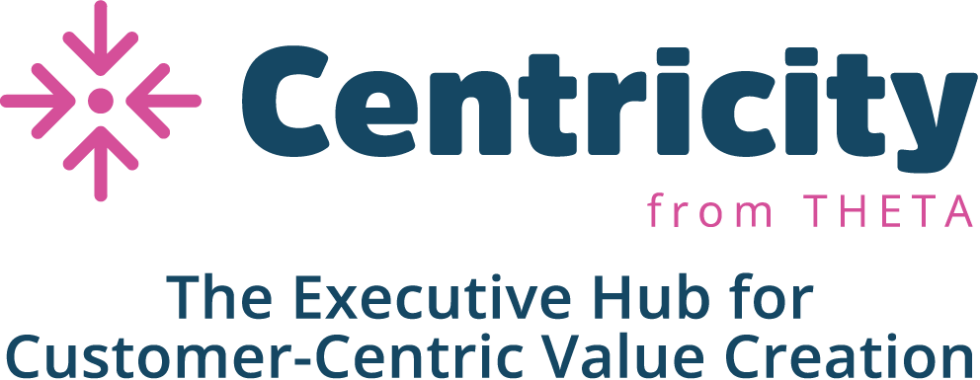Perfect your investment thesis with a customer-base analysis
Written by Tara Heptinstall | October 2022

Are you sure your investment thesis is solid? Take the guesswork out of your due diligence with a customer base analysis, and back your assumptions with hard core, value-driving facts. With this analysis, you’ll know if the deal is worth doing. Then when it’s done, you can walk with your shoulders and your ROI high from the fantastic decision you and your deal team made. Don’t miss the opportunity to perfect your investment thesis with a proven customer-base analysis.
What I am referring to is an emerging, disruptive and widely recognized modeling approach, called Customer Based Corporate Valuation® (CBCV). This model is the process of valuing a company from “the bottom up” by forecasting customer acquisition, retention, repeat purchasing, and spending in conjunction with traditional financial data. It exploits a very simple accounting premise: All revenue must come from customers who place orders with an associated spend amount.
The CBCV model enables investment firms to use deeper customer insights to better identify and leverage sources of value through every stage of the investment process. There is no doubt this strategic customer-base analysis can help perfect your investment thesis. As one recent investment banker we talked to said, “Prediction together with valuation is the Holy Grail.”
Yep. It’s really that simple.
Signals During Due Diligence
The due diligence process is a great place to introduce a customer base analysis, so you have as much clarity as possible about the value and challenges within the business. Those learnings during (or just after) the diligence phase are great foundational insights for your strategy to unlock value and drive growth.
I saw this firsthand in a previous role at a private equity-backed technology company where I served on the sell-side management team going through the arduous deal-making process. The truth is, had our private equity buyers implemented a customer base analysis in their diligence phase, they would have had better indicators of the pressure that customer churn was creating on the business. They likely would have had a very solid picture of which customers were ultimately driving profitability and which ones were consuming a lot of internal resources, making them less profitable. And they probably would have realized that these less profitable customers comprised the largest part of the customer base.
Had a better analysis of the health of the customer base been available at the time, I’m not sure what the outcome might have been. But the private equity firm that ultimately bought the business discovered quickly that optimizing for growth was going to require aggressive steps and a longer time horizon than they banked on. Our data science team here at Theta sees this kind of thing quite a bit.
A Few Examples
In one case, our insights influenced an investment firm not to pursue the purchase of a subscription-based company. It turned out that, after deeper customer analysis, the customers weren’t profitable, the company’s customer acquisition efforts were failing, and customer acquisition cost (CAC) was growing at a disproportionate rate. The firm was able to walk away from what would have been a bad deal.
Here are more examples of the signals (not all red, mind you) that have emerged in some of our recent private equity work:
- Pet care industry. We ran our customer value models and found that customer value was substantially higher than the most optimistic management estimates. The customers exhibited a strong repeat purchasing behavior and the management underestimated its long-term impact on value. Our insights allowed the private equity firm to be more aggressive and make a significantly higher bid than they originally planned.
- Internet services. In addition to our typical insights, we identified products where the company left money on the table. (The products were relatively low priced compared to the value to their customers.) This presented an immediate pricing opportunity to generate additional value.
- Personal care products. Our analysis showed that despite improving customer lifetime value (CLV), the company’s customer acquisition costs (CAC) were growing disproportionately faster, making overall unit economics less attractive over time.
- Home / bedding. We analyzed how effectively the target company was spending its marketing dollars. Among other insights, we discovered that it’s second largest customer acquisition channel not only drove customers with below average value, but it did also so at an extremely high cost, resulting in negative ROI. This presented an opportunity to reallocate marketing budget in order to improve customer value and marketing ROI.
By the way, the models themselves are just plain cool. You can read here how they differ from anything “off the shelf” if you want to learn more about the approach our data scientists take.
Faster Value Creation
So your deal team nailed it. You made the offer and won the business. Congratulations! With your customer base analysis complete from the due diligence phase, you now have all kinds of signals for how you can optimize this new business as a shiny star in your portfolio.

Perhaps CAC looks out of balance to revenue, so you can plan accordingly by reallocating your marketing budget. Maybe you now have a good list of the most profitable customers and an idea of their core attributes. If so, your marketing and sales programs can be focused on finding more like them. You also have a plethora of tactical insights to guide your customer retention and development efforts.
Or you discover that the business is “first-purchase profitable.” Where you may have lots of upside is a digital product strategy that gives you more opportunity for upsell, cross sell, and repeat purchase without burdening the business with more overhead. Perhaps, as was the case of my previous company, you now know that churn is having outsized negative impacts, and there needs to be a complete customer experience overhaul. With that kind of insight earlier on, you can get smart fast and align with the company’s management team to focus on internal programs that will have the greatest impact.
Build a Solid Value Narrative for Potential Buyers Upon Exit
Time for exit? Let the customer base tell the story of the value you’ve created.
You should have your refreshed customer base analysis in hand. (Ideally, you’ve been refreshing your analysis throughout your investment in the business.) You should also have solid implementation of insights-driven strategic programs in your rear-view mirror, as well as great business fundamentals and good alignment between the private equity operating team and the company’s management team. These things will set up a strong “value narrative” for potential buyers when you are ready to sell.
As you embark on the path to exit, begin creating the investment teasers and start following the sell-side playbook. Your demand for a big multiple won’t be a hard pill for investors to swallow because the long-term value for this business will be clear. The type of customer value analysis you did in your due diligence phase and throughout your operation of the business is the same one that will provide the core story on why this business is the value-creation linchpin for the next acquirer.
Summary: ROI on a High
Because you took advantage of this emerging predictive model that looks from the bottom up at the health of the customers, you knew at all stages of your value creation journey how to lever the business operation to squeeze every ounce of value. Your commercial strategies were solid. Your profitability Pareto guided you to distinguish between the most important few customers and the less important many customers.
Your acquisition expenses were well balanced. Your marketing, sales and customer care teams were surgical in their approach to acquire, develop, and retain the best customers. The numbers worked; the money flowed in.
If you think all of this sounds too good to be true, don’t just take my word for it. See what is being said by others about this approach. Then think about the insight you’ll have to make that next investment thesis a business growth reality come true.

